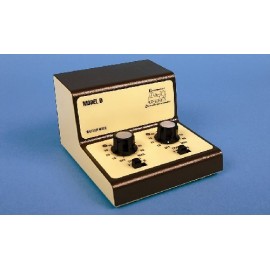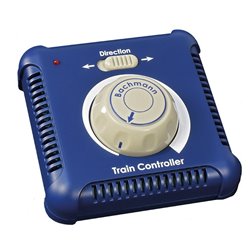There are a number of different options for attaching figures such as a horse and rider to a layout. Perhaps the...
No products
Product successfully added to your shopping cart
There are 0 items in your cart. There is 1 item in your cart.
Search Tips
Is running a locomotive at slow or very slow speed considered a good way to keep it in good running condition?
Running a locomotive at slow or very slow speeds can indeed be beneficial for keeping it in good running condition. Here's why:
- Smooth running: running a locomotive at slower speeds allows for smoother operation. It reduces the strain on the motor and drivetrain components, resulting in less wear and tear. This can help prevent excessive stress on the locomotive's internal mechanisms and promote longevity.
- Break-in period: when a Modeller first acquires a new locomotive, running it at slow speeds is often recommended during the break-in period. This allows the moving parts to settle and mesh properly, ensuring optimal performance over time. Following the manufacturer's guidelines regarding break-in procedures can help establish a solid foundation for the locomotive's long-term reliability.
- Maintenance checks: operating a locomotive at slow speeds provides an opportunity for a Modeller to closely observe its performance and detect any potential issues. By listening for unusual sounds, monitoring the smoothness of movement and inspecting for any visible signs of wear or damage, a Modeller can conduct effective running checks on a locomotive. If adopted as a regular inspection routine, this can help identify and address problems early on, reducing the likelihood of more significant issues down the line.
- Track cleaning: slow-speed running can assist in track cleaning. Slower speeds allow the locomotive's wheels to make better contact with the track, which can help remove dirt, dust, and oxidation. This can contribute to improved electrical conductivity and smoother operation of the entire layout.
- Realistic operations: running a locomotive at slow speeds can add realism to a layout as the locomotive is more likely to be running at an appropriate scale speed. Trains in real life often move at various speeds depending on the terrain, load and circumstances. By incorporating slow-speed operation, a modeller can emulate the prototypical movements of trains, enhancing the overall authenticity of their layout.
It's important to note that while running a locomotive at slow speeds can have benefits, it's equally crucial to provide regular maintenance and adhere to the manufacturer's guidelines for servicing, lubrication and cleaning. Each locomotive model may have specific recommendations for optimal performance and maintenance, so consulting the manufacturer's documentation is advisable.
By incorporating slow-speed running as part of a regular inspection routine, a modeller can help maintain the performance, longevity and realism of the locomotives operating on their layouts.
Click here to receive the tips weekly in your mailbox. You can unsubscribe at any time.










